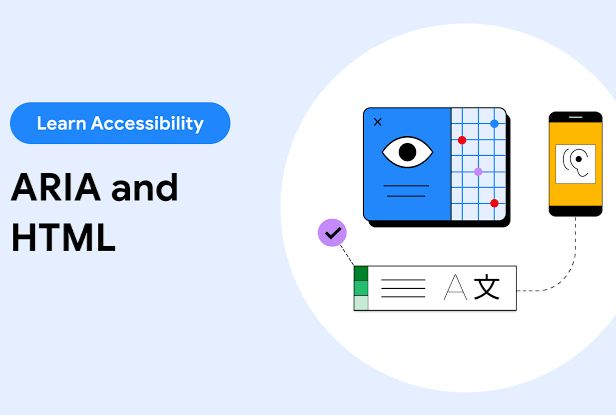Book Appointment Now
Practices for Web Design & Development.

1. Begin with Thinking: Strategy & User Needs
Before sketching or coding, clarify:
- Business goals & target users: Define whether success means lead generation, product education, or community building, and parse device/browser habits.
- Inclusive design from the start: Center people with diverse abilities and contexts—think low vision, keyboard-only users, or seasonal access challenges. Embrace universal design principles, not as an afterthought. searchmyexpert.comWikipedia
- Technical constraints and audit: Decide if you need a static site generator, headless CMS, PWA, or e-commerce backend. Start lean for speed and scalability.
*“Solve for one, extend to many”: designing for edge cases often improves the experience for all. *—a core tenet of inclusive strategy. Wikipedia
2. Design Foundations: Mobile‑First, Responsive & Scalable
- Mobile‑first layout: Begin on the smallest screens, focusing on essential content and clear CTAs. Enhance upward from there. webstacks.comDanabak
- Fluid responsive grids: Use
<container>elements with%widths andrem/emtypography to scale across breakpoints—don’t rely on fixed pixel layouts. medium.com+7purelogics.com+7datamyte.com+7 - Touch-first design: Ensure tap areas ≥ 44×44px, avoid relying on hover, and support zoom access and high-contrast modes where possible. blog.pixelfreestudio.com+3purelogics.com+3datamyte.com+3
- Styling hierarchy & sensible breakpoints: Use content-driven breakpoints (not device-specific) and separate responsive CSS into clear modules. onenine.comWikipedia
3. Build Accessibly: Semantic HTML, ARIA & Keyboard Support
- Use semantic HTML5 elements (
<header>,<nav>,<main>,<form>,<button>) to convey page structure. bruceandeddy.comwbcomdesigns.com - Apply ARIA landmarks and roles (“navigation”, “main”, “alert”) alongside clear
<label>tags and form grouping to aid screen reader navigation. blog.pixelfreestudio.combruceandeddy.com - Keyboard‑only operability: All interactive elements must be reachable via
Tab, with visible focus states. Alt text, media captions, skip-links—none optional. bruceandeddy.com - Enforce at least WCAG AA standards, with color contrast ≥ 4.5:1 and accessible motion preferences. wbcomdesigns.combruceandeddy.com

4. Progressive Enhancement & Offline-First Options
- Progressive enhancement ensures core content loads via HTML/CSS; JavaScript augments experience without breaking fallback support. purelogics.com
- For sites serving unstable-network or low‑bandwidth users, layer on PWA strategies:
- App-shell caching via service workers
- Offline-friendly fallback pages and sync logic
- Choose caching strategies like stale‑while‑revalidate or network‑first carefully. reddit.com+11blog.pixelfreestudio.com+11datamyte.com+11multitaskai.com+1searchmyexpert.com+1
- Maintain deep links and semantic routing so pages remain crawled and bookmarked even when JavaScript is disabled. developer.mozilla.org
5. Performance as a Pillar: Speed & Responsiveness
Excellent user experience (and consolidated SEO) starts with optimized performance.
- Core Web Vitals optimization:
- LCP (Largest Contentful Paint) under 2.5s
- FID (First Input Delay) < 100ms
- CLS (Cumulative Layout Shift) under 0.1
- Monitor with PageSpeed Insights and Lighthouse. bulletsdaily.comrickyspears.com
- Reduce asset weights: Use WebP or AVIF images, minify CSS/JS, lazy-load media, and use HTTP caching/CDNs heavily. purelogics.com+1blog.pixelfreestudio.com+1
- Audit or remove unused third-party scripts, especially analytics tags or tracking pixels that bloat load time. bulletsdaily.com
6. Secure & Privacy‑First Architecture
- Secure by design: Integrate HTTPS, set up Content Security Policy, sanitize inputs, and use robust authentication flows before publishing. Wikipedia
- Privacy by design: Default to minimal data collection, allow opt‑in only, enable data removal or export, disclose privacy policies clearly. Wikipedia
7. Development Efficiency: Tools, CI/CD & Design Systems
| Stage | Tools and Practices |
|---|---|
| Version control | Git flow: separate branches for feature, dev, staging, release; enforce code reviews and semantic commits |
| UI consistency | Use a design system: centralize colors, layouts, forms, button styles (Figma, Zeroheight, Storybook). Carbon, Fluent UI, Polaris are good references. reddit.com |
| Testing automation | Unit/ integration tests with Jest, Cypress, or Selenium; run CI pipelines via GitHub Actions, CircleCI, or Jenkins. |
| Cross-browser QA | Use BrowserStack, LambdaTest; test Safari, IE/Edge (for B2B), Chrome, Firefox on real devices/emulators. netguru.com |
| Build performance | Use bundlers: Webpack, Vite, or Snowpack; prefer code-splitting and tree-shaking. Keep bundle size under 200KB. |
8. Modern Enhancements: AI, Personalization & PWAs
- AI-enhanced content and UI: Consider using AI to personalize offers, recommend components, or power search/pop-ups server-side (e.g. via React Server Components or edge‑functions). devainer.comnetguru.com
- Progressive Web App (PWA) features if you need app-like UX: home-screen install, offline modes, push notifications, with care for battery/API constraints. Ensure it degrades gracefully. rickyspears.comdeveloper.mozilla.org

9. Post‑Launch Maintenance & Analytics
- Monitor performance and Core Web Vitals regularly and fix regressions proactively.
- Run automated accessibility audits using Axe or WAVE; follow up with manual keyboard/screen-reader testing.
- Audit dependencies monthly: patch libraries and fix vulnerabilities.
- Use analytics to measure engagement, bounce, scroll-depth, and form abandonment—and iterate based on data.
10. 2025 Website Delivery Checklist ✅
- Mobile‑first layouts and fluid, accessible grids
- Semantic HTML + ARIA + keyboard navigability
- Accessible forms, alt-text, contrast compliant
- Progressive enhancement with performant fallback
- LCP, CLS, FID optimized; assets minified & lazy-loaded
- HTTPS, CSP, user data transparency built-in
- Version control + CI/CD + consistent design system
- Cross-browser/device testing including assistive tech
- Build optimized bundles; leverage CDNs & caching
- Post-launch monitoring for accessibility, performance, security
🚀 Why This Matters in 2025
Over 70% of web sessions now come from devices with limited connectivity or older browsers. Interactions with infographics, mobile shoppers, or users relying on accessibility tools are all sensitive to design missteps.
By integrating performance, accessibility, and security into your fundamental process, you’re not only delivering better UX—you’re building trust, legal compliance, and long-term sustainability.
